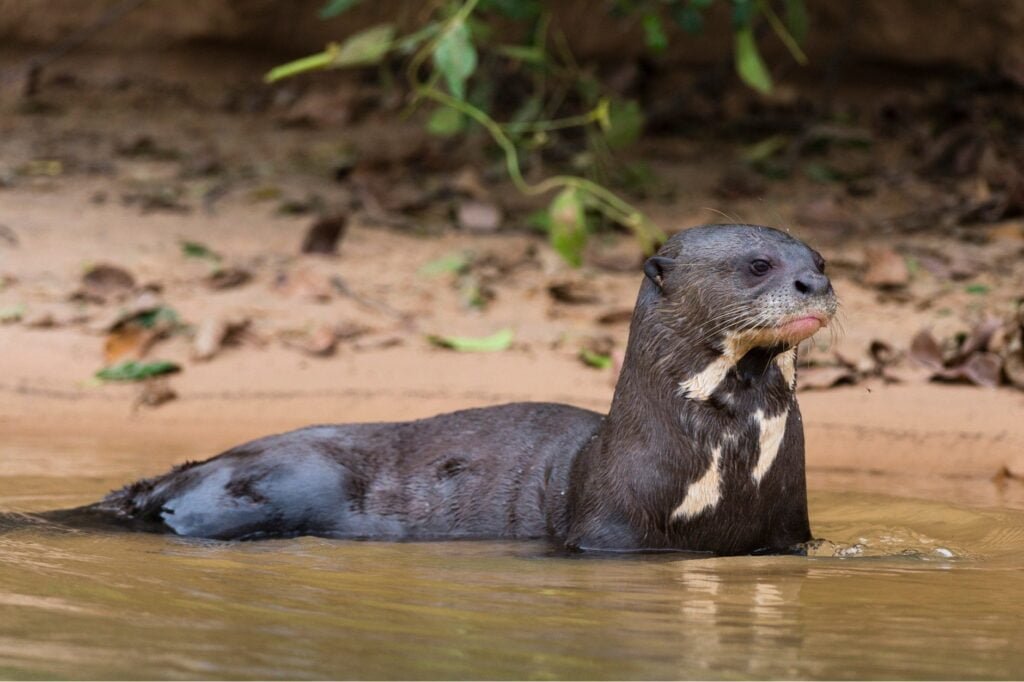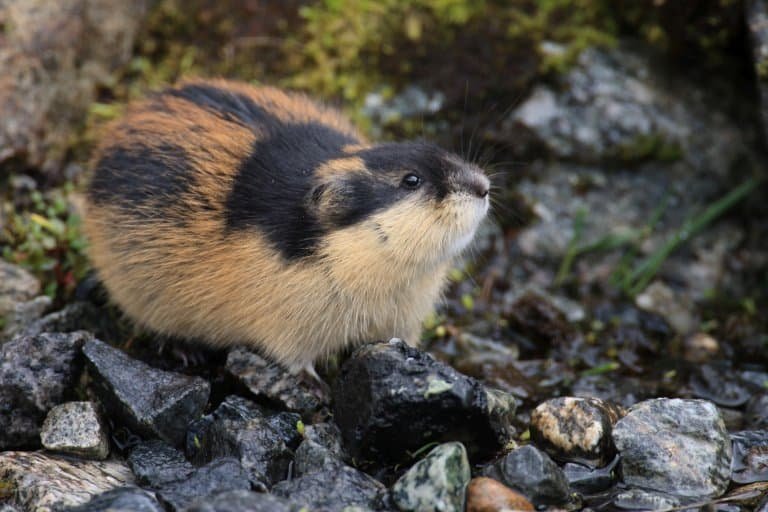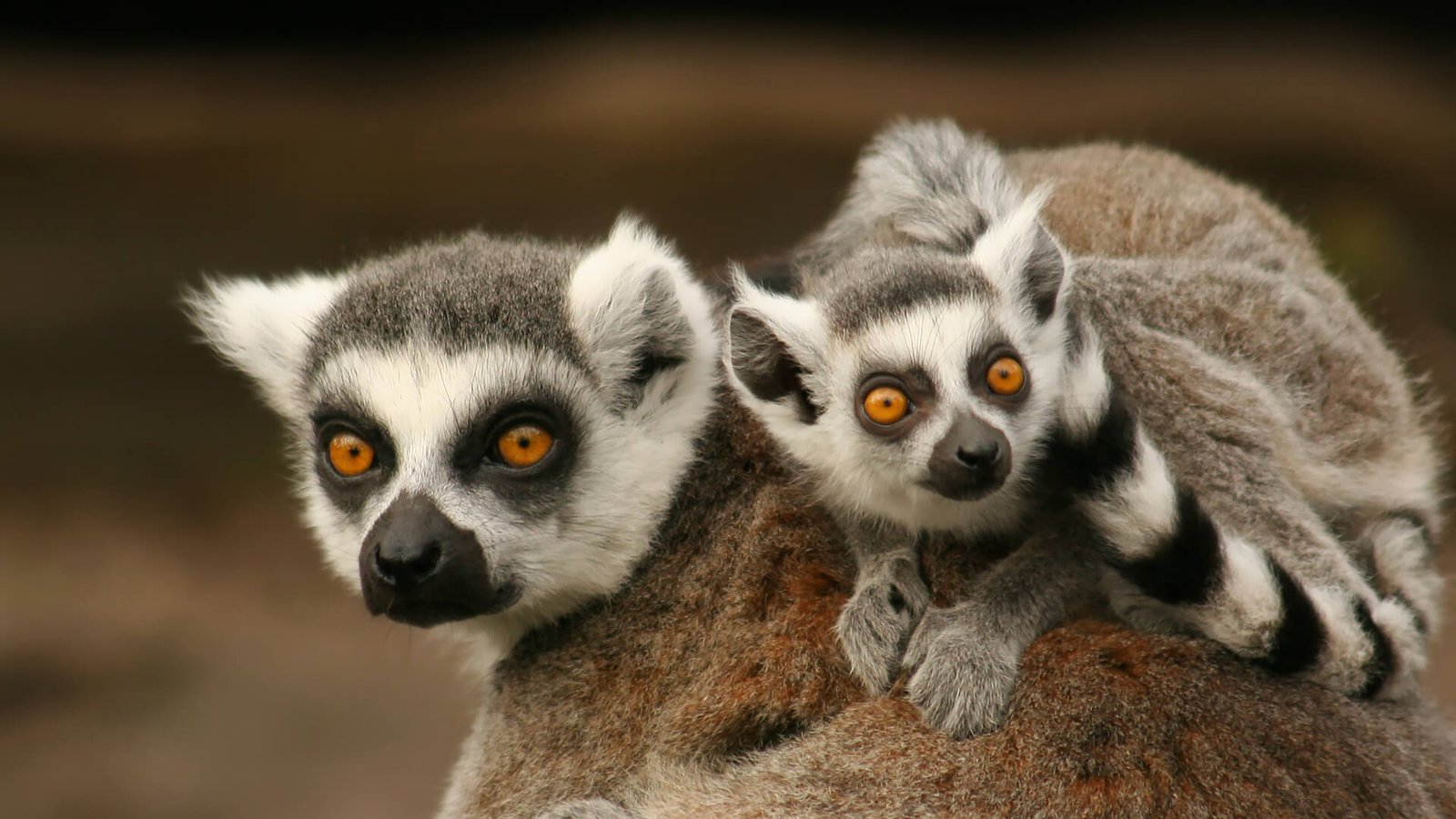Giant otter Facts, FAQs, Behaviour, Habitat and Conservation

Giant otter Facts | Description | Distribution and Habitat | Conservation | Behaviour and Ecology | Interaction with Human | Cultural | Interesting facts | frequently asked questions about Giant otter
Looking for a fascinating creature that’s both cute and fierce? Look no further than the Giant Otter! As the largest member of the weasel family, these semi-aquatic mammals are known for their playful personalities, powerful jaws, and impressive swimming skills. Found in the rivers and wetlands of South America, the Giant Otter is a top predator, hunting fish, snakes, and even small caimans with ease. With its distinctive long, sleek body and velvety brown fur, the Giant Otter is a sight to behold both in and out of the water. Get ready to dive into the world of this amazing mammal and discover why it’s one of the most beloved creatures in the animal kingdom.
Taxonomy of Giant otter
| Kingdom | Animalia |
|---|---|
| Phylum | Chordata |
| Class | Mammalia |
| Order | Carnivora |
| Family | Mustelidae |
| Genus | Pteronura |
| Species | Pteronura brasiliensis |
Morphology of Giant otter
| Feature | Description |
|---|---|
| Size | Body length: 1.5-1.8 m (5-6 ft), Tail length: 0.7-1 m (2-3 ft) |
| Weight | 22-32 kg (49-71 lb) |
| Fur | Short, dense, velvety, dark brown with cream or white throat and chest |
| Head | Broad and flat, with small, round ears and short, muscular neck |
| Teeth | Sharp and strong, with large canine teeth and molars for crushing shells |
| Limbs | Short, powerful legs with webbed feet for swimming, strong claws for digging dens |
| Tail | Long, muscular, tapered to a point, used for steering while swimming |
| Senses | Excellent vision and hearing, poor sense of smell |
| Lifespan | Up to 10-12 years in the wild, up to 21 years in captivity |

Description of Giant otter
The Giant Otter (Pteronura brasiliensis) is a large, semiaquatic mammal that belongs to the weasel family. It is also known as the river wolf, because of its impressive hunting skills and fierce personality. The Giant Otter is the largest of the otter species, with a body length of 1.5-1.8 meters and a weight of 22-32 kilograms.
The Giant Otter’s fur is short, dense, and velvety, with a dark brown color on its back and sides and a cream or white throat and chest. Its head is broad and flat, with small, round ears and a short, muscular neck. The Giant Otter’s teeth are sharp and strong, with large canine teeth and molars for crushing shells.
The Giant Otter’s limbs are short and powerful, with webbed feet for swimming and strong claws for digging dens. Its tail is long, muscular, and tapered to a point, used for steering while swimming. The Giant Otter has excellent vision and hearing, but a poor sense of smell.
The Giant Otter is found in the rivers and wetlands of South America, from Venezuela to Argentina. It is a top predator, hunting fish, snakes, and even small caimans with ease. The Giant Otter is a social animal, living in family groups of up to eight individuals, with a dominant breeding pair and their offspring.
The Giant Otter is a vulnerable species, with a decreasing population due to habitat loss, hunting, and pollution. Conservation efforts are being made to protect the remaining populations, including habitat restoration, education, and captive breeding programs.
Distribution and habitat of Giant otter
The Giant Otter (Pteronura brasiliensis) is a semi-aquatic mammal that is found in South America, from Venezuela to Argentina. The species is typically found in freshwater ecosystems, such as rivers, streams, and wetlands, with dense vegetation and clear waters. The Giant Otter requires large areas of undisturbed riparian habitat with access to prey, and is particularly sensitive to human disturbance.
Within its range, the Giant Otter is generally found in lowland regions, but can also occur at higher elevations in some areas. The species has been recorded at elevations up to 1,000 meters in the Andean foothills. The Giant Otter is most commonly found in the Amazon basin, but also occurs in the Orinoco, Paraná, and Essequibo river systems.
The Giant Otter’s habitat is characterized by a complex network of rivers, streams, and wetlands that provide diverse habitats for a variety of aquatic species. The species prefers slow-moving water with a sandy or muddy bottom, and avoids areas with fast currents or rocky substrates. The Giant Otter is also associated with oxbow lakes, lagoons, and floodplain forests, which provide important foraging and resting habitats.
Overall, the Giant Otter is a highly specialized species that is tightly linked to freshwater ecosystems in South America. The species is threatened by habitat loss and degradation, as well as hunting and poaching, and conservation efforts are needed to ensure its long-term survival.
Behaviour and Ecology of Giant otter
The Giant Otter (Pteronura brasiliensis) is a highly social and intelligent species that exhibits a range of interesting behaviors and ecological interactions. The species is a top predator in freshwater ecosystems, feeding primarily on fish, but also taking crustaceans, snakes, and small mammals.
Giant Otters live in family groups that consist of a dominant breeding pair and their offspring. These groups are highly territorial and defend their territories vigorously against other otters and potential predators. The Giant Otter is known for its vocalizations, which include snorts, barks, and screams, and is highly communicative with its group members.
The species is also known for its impressive hunting skills. Giant Otters have sharp teeth and powerful jaws that allow them to catch and eat large fish, such as piranhas and catfish. They are also able to crush the shells of mollusks and crabs with their molars.
Giant Otters are highly adapted to their aquatic environment. They have webbed feet, a streamlined body, and a powerful tail that allow them to swim quickly and efficiently through the water. They are also able to hold their breath for several minutes while diving for food or escaping predators.
The species plays an important ecological role in freshwater ecosystems. As top predators, Giant Otters help to regulate fish populations and maintain the health of aquatic ecosystems. They also create and maintain dens along riverbanks, which provide important shelter for other aquatic species.
Overall, the Giant Otter is a fascinating species that exhibits a range of interesting behaviors and ecological interactions. The species is threatened by habitat loss and other human impacts, and conservation efforts are needed to ensure its survival.
Conservation of Giant otter
The Giant Otter (Pteronura brasiliensis) is a vulnerable species that is threatened by habitat loss, pollution, and hunting. The species has suffered significant population declines in recent years, and is now primarily found in remote and protected areas of South America.
Conservation efforts are underway to protect the remaining populations of Giant Otters. One key strategy is the protection and restoration of riparian habitats, which are critical for the species’ survival. This includes the establishment of protected areas, such as national parks and wildlife reserves, that provide secure habitats for the species.
Another important conservation strategy is the reduction of human impacts on freshwater ecosystems. This includes the reduction of pollution, dam construction, and other activities that can disrupt the natural flow of rivers and streams. Education and outreach programs are also important for raising awareness about the importance of Giant Otters and their habitats, and for encouraging sustainable and responsible use of freshwater resources.
Captive breeding programs have also been established to help conserve the Giant Otter. These programs involve the breeding of the species in captivity, with the eventual goal of reintroducing individuals into the wild. Such programs have been successful in increasing the population of the species in some areas, and may be an important tool for conserving the species in the future.
Overall, conservation efforts are critical for protecting the Giant Otter and ensuring its long-term survival. The species plays an important ecological role in freshwater ecosystems, and is a unique and fascinating mammal that is valued by many people around the world.
Interaction with Human of Giant otter
The Giant Otter (Pteronura brasiliensis) has a complex relationship with humans. The species is highly valued for its fur, which has made it a target of hunting and poaching in some areas. At the same time, the species is also a popular attraction for ecotourism, and is valued for its role in maintaining healthy freshwater ecosystems.
Hunting and poaching have been significant threats to the Giant Otter in some areas. The species has been hunted for its fur, which is used in traditional clothing and handicrafts. This practice has significantly reduced populations of the species in some areas, and has led to its listing as an endangered species in many countries.
Ecotourism has emerged as an important alternative to hunting and poaching for the Giant Otter. Many countries have established protected areas that allow visitors to view and appreciate the species in its natural habitat. This type of tourism provides economic benefits to local communities, while also encouraging conservation and protection of the species.
Despite the potential benefits of ecotourism, it can also have negative impacts on the Giant Otter. Increased human activity around riparian habitats can disrupt the natural behavior of the species, and can also expose it to increased risk of disease and disturbance.
Overall, the interaction between the Giant Otter and humans is complex and multifaceted. While the species has faced significant threats from hunting and poaching, it also holds significant value for ecotourism and conservation. Conservation efforts that balance the needs of the species with the needs of local communities and visitors are critical for ensuring its long-term survival.
Cultural and Historical Significance of Giant otter
The Giant Otter (Pteronura brasiliensis) has played an important role in the culture and history of many indigenous communities in South America. The species is highly valued for its fur, which has been used in traditional clothing, jewelry, and other handicrafts. It is also revered for its strength, agility, and beauty.
In many indigenous cultures, the Giant Otter is associated with water and is considered a powerful spiritual symbol. The species is often depicted in art and mythology, and is believed to have special powers and abilities, such as the ability to communicate with other animals and to predict the weather.
The Giant Otter has also played a role in the history of European explorers in South America. In the 19th and early 20th centuries, the species was hunted extensively for its fur, which was highly prized in the European fashion industry. This led to significant population declines and the species’ listing as an endangered species.
Today, the Giant Otter is celebrated for its cultural and historical significance, as well as for its ecological importance. Efforts to conserve and protect the species take into account both its cultural and ecological value, and seek to balance the needs of local communities with the need to preserve the species for future generations.
Overall, the Giant Otter holds significant cultural and historical significance for many communities in South America, and is valued for its beauty, strength, and spiritual significance. Its conservation is important not only for its ecological role in freshwater ecosystems, but also for its cultural significance and historical legacy.
Explanatory Notes for Giant otter
The Giant Otter (Pteronura brasiliensis) is a large semiaquatic mammal that is native to South America. It is the longest member of the Mustelidae family, with males growing up to 6 feet in length and weighing up to 75 pounds. The species has a sleek, dark brown coat that is water-repellent, which helps to keep the animal warm and dry in its aquatic habitat.
Giant Otters are found primarily in freshwater habitats, such as rivers, lakes, and swamps. They are highly social animals and live in family groups that can consist of up to 8 individuals. The species is known for its vocalizations, which include a variety of grunts, whistles, and screams that are used for communication within the family group.
The diet of the Giant Otter consists primarily of fish, although it also occasionally feeds on other aquatic animals, such as crustaceans and snakes. The species is an apex predator in its ecosystem, and plays an important role in maintaining the health of freshwater ecosystems.
The Giant Otter has faced significant threats from hunting, poaching, and habitat loss. The species is listed as an endangered species in many countries, and conservation efforts are underway to protect and preserve populations of the species.
Overall, the Giant Otter is a unique and fascinating mammal that plays an important role in South American ecosystems. Its size, social behavior, and vocalizations make it a popular attraction for ecotourism, while its ecological importance underscores the need for conservation and protection of the species.
Interesting facts about Giant otter
Here are 10 interesting facts about the Giant Otter:
- The Giant Otter is the largest member of the weasel family, or Mustelidae, in the world.
- The Giant Otter is a very social animal, and is known to live in family groups consisting of up to 8 individuals.
- The Giant Otter has a waterproof coat that keeps it dry and warm in its aquatic habitat.
- The Giant Otter is an apex predator in its ecosystem, and is known to feed on a variety of fish species.
- The Giant Otter has a distinctive vocalization, which includes a variety of grunts, whistles, and screams that are used for communication within the family group.
- The Giant Otter has very sharp teeth, which are used for catching and eating fish.
- The Giant Otter is an excellent swimmer, and can swim at speeds of up to 9 miles per hour.
- The Giant Otter has been known to use rocks to break open the shells of crabs and other crustaceans, making it one of the few known tool-using mammals.
- The Giant Otter is a highly endangered species, with populations declining due to habitat loss, poaching, and pollution.
- The Giant Otter is a popular attraction for ecotourism, and is a flagship species for conservation efforts in South America.
General queries or frequently asked questions about Giant otter
What is a Giant Otter?
The Giant Otter is a large semiaquatic mammal that is native to South America. It is the longest member of the Mustelidae family, with males growing up to 6 feet in length and weighing up to 75 pounds.
Where can Giant Otters be found?
Giant Otters are found primarily in freshwater habitats, such as rivers, lakes, and swamps, in South America. They are most commonly found in the Amazon Basin, as well as in the Pantanal wetlands of Brazil.
Are Giant Otters endangered?
Yes, Giant Otters are highly endangered, with populations declining due to habitat loss, poaching, and pollution. The species is listed as endangered on the IUCN Red List, and conservation efforts are underway to protect and preserve populations of the species.
What do Giant Otters eat?
The diet of the Giant Otter consists primarily of fish, although it also occasionally feeds on other aquatic animals, such as crustaceans and snakes. The species is an apex predator in its ecosystem, and plays an important role in maintaining the health of freshwater ecosystems.
How long do Giant Otters live?
Giant Otters typically live for 8 to 10 years in the wild, although they can live up to 15 years in captivity.
How do Giant Otters communicate?
Giant Otters have a distinctive vocalization, which includes a variety of grunts, whistles, and screams that are used for communication within the family group.
Why are Giant Otters important to the ecosystem?
Giant Otters are apex predators in their ecosystem, and play an important role in maintaining the health of freshwater ecosystems. By controlling populations of fish and other aquatic animals, they help to maintain balance in their ecosystems.
Are Giant Otters dangerous?
Giant Otters are not typically dangerous to humans, although they can be aggressive if they feel threatened or cornered. It is important to give them their space and avoid disturbing them in their natural habitat.
Do Giant Otters have any predators?
Adult Giant Otters do not have any natural predators, although young otters may be preyed upon by caimans, anacondas, and other large predators.
Can Giant Otters swim?
Yes, Giant Otters are excellent swimmers, and can swim at speeds of up to 9 miles per hour. They use their powerful tails and webbed feet to navigate through the water.
Conclusion
In conclusion, the Giant Otter is a fascinating and unique species that is native to South America. With its distinctive vocalizations, powerful swimming abilities, and sharp teeth, the Giant Otter is a top predator in its ecosystem and plays an important role in maintaining the health of freshwater ecosystems. However, the species is also highly endangered due to habitat loss, poaching, and pollution, and conservation efforts are underway to protect and preserve populations of the species. By learning more about this remarkable animal and supporting conservation efforts, we can help to ensure that the Giant Otter continues to thrive in the wild for generations to come.












